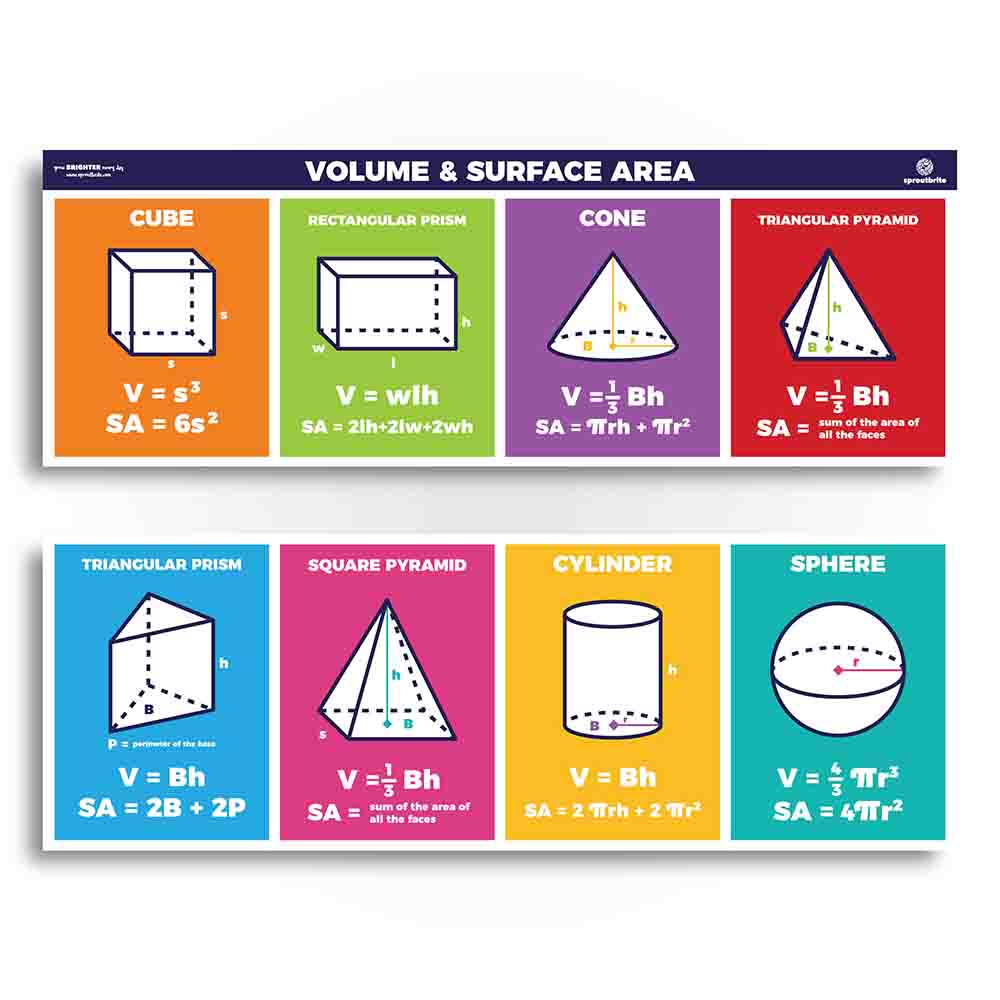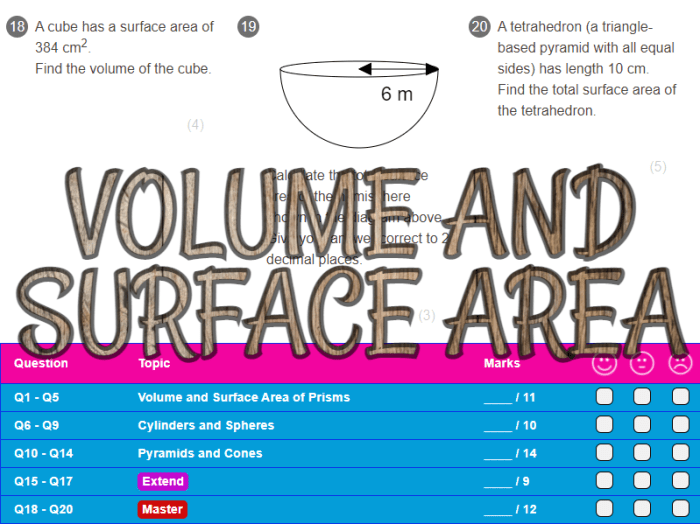Unit 11 test study guide volume and surface area answers – The Unit 11 Test Study Guide: Volume and Surface Area Answers provides a comprehensive review of the key concepts related to volume and surface area, equipping students with the knowledge and skills necessary to excel in their upcoming test.
This guide covers the fundamental formulas and theorems associated with volume and surface area, exploring the intricacies of prisms, cylinders, and pyramids. It emphasizes the practical applications of these concepts in real-world scenarios, demonstrating their significance in various fields.
Unit 11 Test Study Guide: Volume and Surface Area
This study guide provides a comprehensive overview of the concepts, formulas, and theorems related to volume and surface area, which are essential for success in Unit 11 test. Understanding these concepts is crucial for solving problems involving the measurement of three-dimensional shapes.
Volume of Prisms, Cylinders, and Pyramids

The volume of a prism is calculated using the formula: Volume = Base Area × Height. The volume of a cylinder is calculated using the formula: Volume = πr²h, where r is the radius of the base and h is the height.
The volume of a pyramid is calculated using the formula: Volume = (1/3) × Base Area × Height.
Examples:
- A rectangular prism with a base length of 5 cm, a width of 3 cm, and a height of 4 cm has a volume of 60 cm³.
- A cylinder with a radius of 5 cm and a height of 10 cm has a volume of 250π cm³.
- A square pyramid with a base side length of 6 cm and a height of 8 cm has a volume of 96 cm³.
Surface Area of Prisms, Cylinders, and Pyramids
The surface area of a prism is calculated by adding the areas of all its faces. The surface area of a cylinder is calculated using the formula: Surface Area = 2πr(r + h), where r is the radius of the base and h is the height.
The surface area of a pyramid is calculated by adding the areas of its base and lateral faces.
Examples:
- A rectangular prism with a base length of 5 cm, a width of 3 cm, and a height of 4 cm has a surface area of 74 cm².
- A cylinder with a radius of 5 cm and a height of 10 cm has a surface area of 314 cm².
- A square pyramid with a base side length of 6 cm and a height of 8 cm has a surface area of 108 cm².
Applications of Volume and Surface Area

Volume and surface area calculations have numerous real-world applications, including:
- Architecture:Calculating the volume of a building to determine its capacity and the surface area of its walls to determine the amount of paint needed.
- Engineering:Calculating the volume of a reservoir to determine its water storage capacity and the surface area of a bridge to determine the amount of material needed for its construction.
- Medicine:Calculating the volume of a patient’s lungs to determine their lung capacity and the surface area of a wound to determine the amount of dressing needed.
Practice Problems and Solutions

Practice Problems:
- Find the volume of a rectangular prism with a base length of 6 cm, a width of 4 cm, and a height of 5 cm.
- Find the surface area of a cylinder with a radius of 3 cm and a height of 6 cm.
- Find the volume of a square pyramid with a base side length of 5 cm and a height of 7 cm.
Solutions:
- Volume = 6 cm × 4 cm × 5 cm = 120 cm³
- Surface Area = 2π(3 cm)(3 cm + 6 cm) = 56.55 cm²
- Volume = (1/3) × 5 cm × 5 cm × 7 cm = 58.33 cm³
Study Tips and Strategies: Unit 11 Test Study Guide Volume And Surface Area Answers
To prepare effectively for the Unit 11 test on volume and surface area, consider the following tips:
- Memorize the formulas:Write down the formulas for volume and surface area of prisms, cylinders, and pyramids and memorize them thoroughly.
- Practice regularly:Solve as many practice problems as possible to improve your understanding and problem-solving skills.
- Review the concepts:Go over the concepts of volume and surface area to ensure you understand them well.
- Understand the applications:Learn about the real-world applications of volume and surface area to see how they are used in different fields.
FAQs
What is the formula for calculating the volume of a prism?
Volume = Base Area x Height
How do I find the surface area of a cylinder?
Surface Area = 2πr(r + h)
What is the significance of understanding volume and surface area concepts?
Volume and surface area are crucial concepts in various fields, including architecture, engineering, and design, as they provide insights into the spatial dimensions and properties of objects.